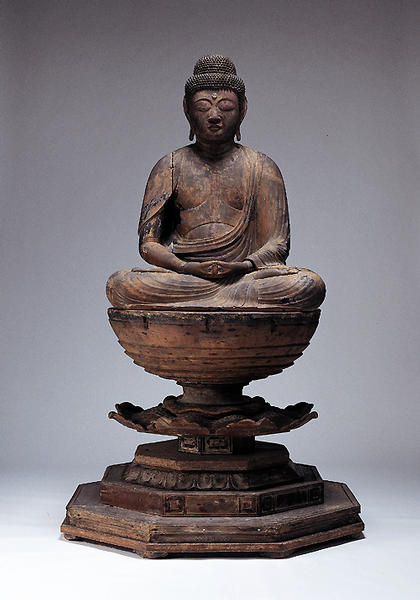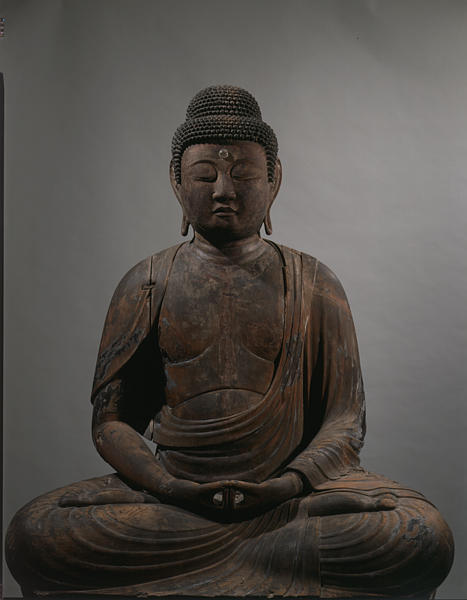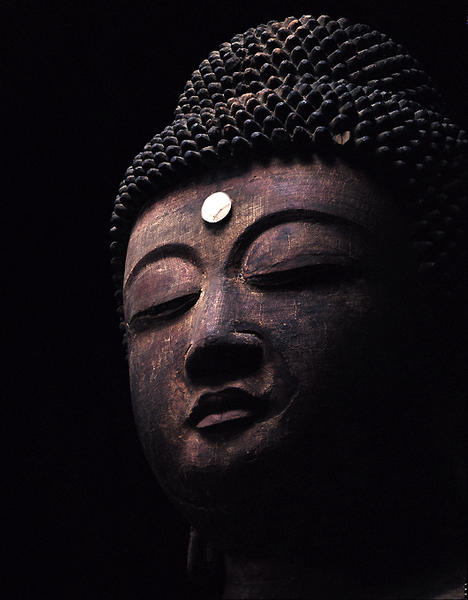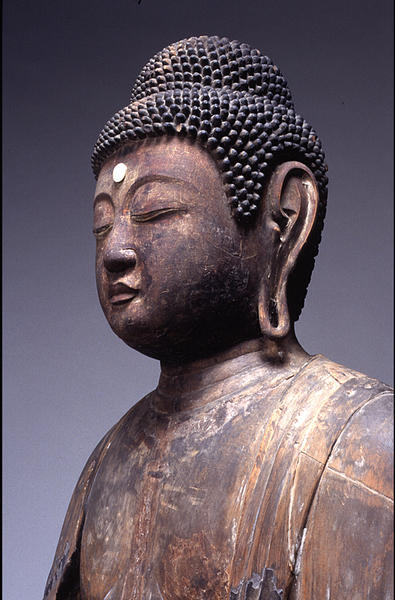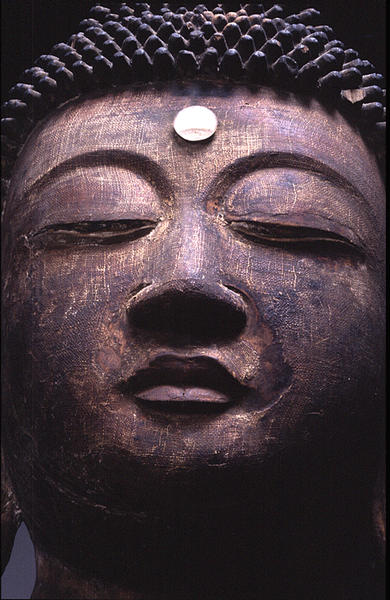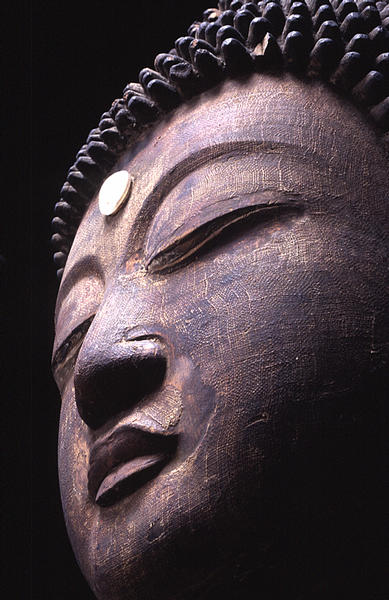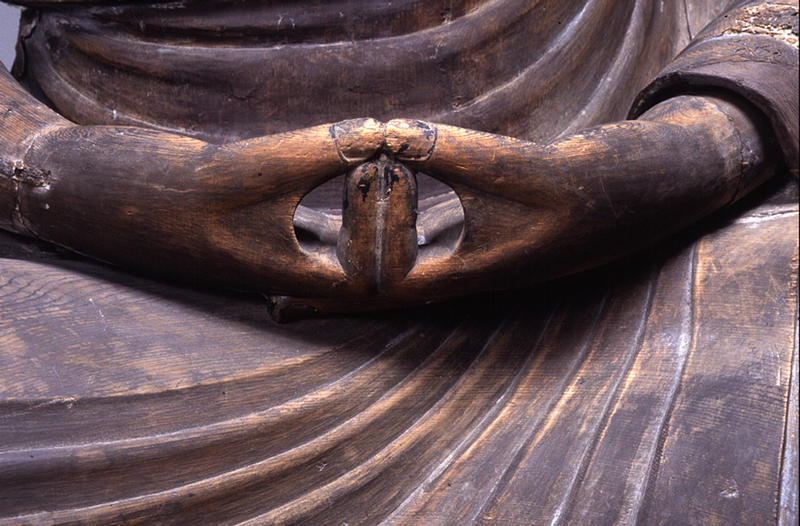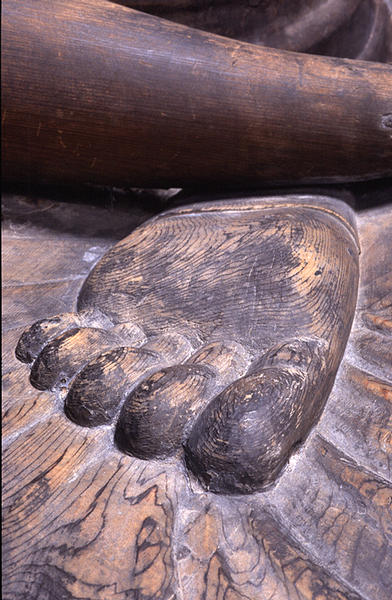Seated Amida Nyorai
- Late Heian period
- 12c
- Wood with gold leaf over lacquer
- H-112.3
- Important Art Object
Catalogue Entry
Late Heian period, 12th century
Assembled wood with lacquer-applied gilding
Figure height, 112.3cm
This is a seated image of Amida Nyorai with both hands clasped in the jo'in mudra (Dhyana-mudra). The jo'in mudra is the mudra which symbolizes a quiet heart and concentration, and the jo'in of Amida shows both hands placed with palms up with the right hand layered over the left, both index fingers bent up at the joint with the backs of the two fingers touching, and both thumbs resting on the tips of these vertical index fingers. This form of Amida image appears in both mandalas of the Ryokai mandala pair, and in Japan, in accordance with the Esoteric teachings of the Jodo sect, the fashion for calling on this Buddha for rebirth in Paradise meant the wide-spread dissemination of Amida images with this mudra during and after the late Heian period.
This figure, like other Nyorai (Tathagata) images, has a fleshy protuberance on his head known as a "nikkei" (Usnisa), snail shell-shaped curls, a "white curl" mark between his eyebrows, and robes draped in the style in which the figure's right shoulder is left exposed. Made of hinoki (Japanese cypress), this sculpture has been formed using the yosegi zukuri sculptural method. This means that the section which forms the central core of the head and body has been constructed from a number of equal-sized blocks of wood, and in the instance of this image, the central core is formed by two pieces of wood joined right and left around the exact middle of the image. The area beneath the neck has been split, and after the two core pieces of wood were hollowed out, the neck was dovetailed to the body section. In addition, the flank of the left side and the right hand were dovetailed, and the elbow and wrist of the right arm were also dovetailed (the hands joined in the jo'in mudra are carved from a single block of wood). Both legs are a dovetailed, single piece of wood. The majority of the surface has fallen away and the plain wood surface left exposed, while the traces of black lacquer that remain here and there are later additions. Originally, the surface would have been finished in lacquer-applied gilding (in which gold leaf is pressed into lacquer).
The round, moon-like face has a gentle expression that is the characteristic style of the late Heian period, while the drapery pleats are somewhat sharp with the occasional appearance of bent corners, an indication of the remains of an older style.
Working from the top, the pedestal is made up of a lotus flower seat (all of the petals have been lost), the tsuka post, keban (with stamens and pistils), shita shikinasu, ukeza, kaeribana, ue kamachi, and shita kamachi (double layered), and is thus an eight-layer lotus pedestal. The shita shikinasu, kaeribana, and a section of the ue kamachi are later additions, but the remaining sections of the pedestal date from the same period as the sculpture, and with the exception of the keban, their carved patterns are also in the standard style for the late Heian period. The nimbus for this image is now lost. SI
